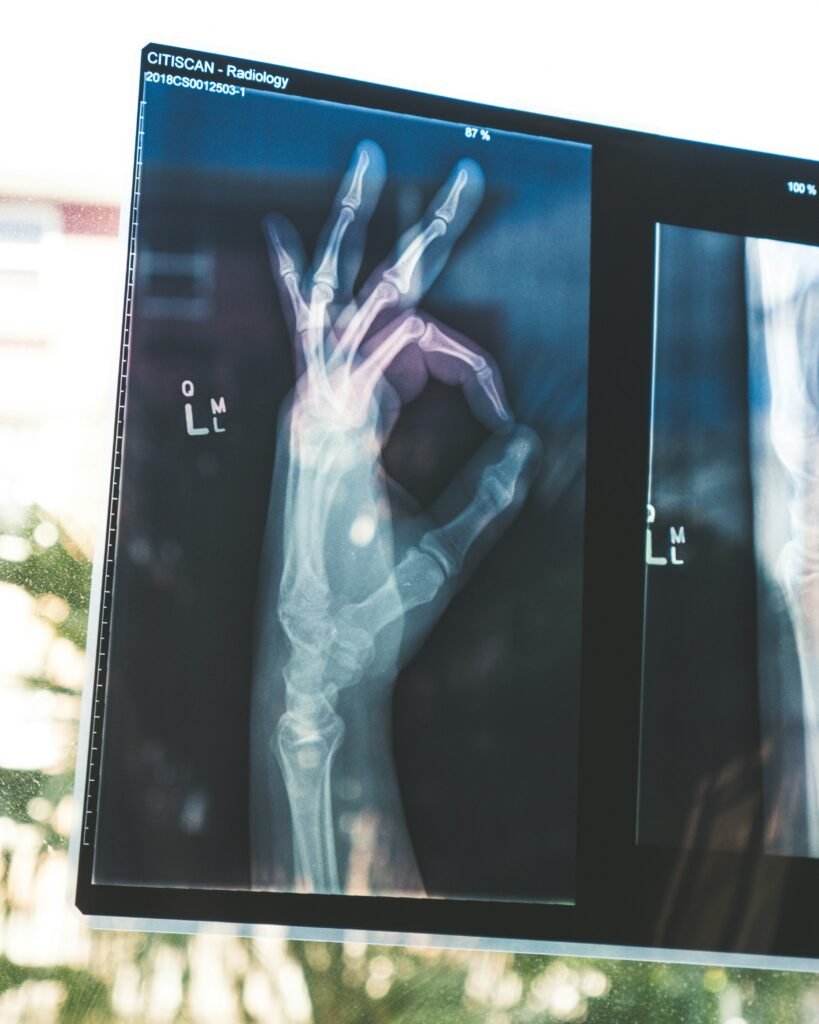Did you know that your cat could potentially give you the plague? While human cases of the plague are rare in the United States, recent reports from Deschutes County, Oregon, have raised concerns about the transmission of the disease from cats to humans. Officials in Oregon announced that a resident had been diagnosed with the plague, and it is believed that the individual contracted the infection from their pet cat. Although the cat died from the infection, the human patient is currently recovering. This case serves as a reminder that cat owners in plague-prone areas need to be vigilant about the risks of infection. So, if you have a pet cat that hunts outside in such an area, it’s important to keep this potential danger on your radar.

What is the plague?
Overview of the plague
The plague is a highly infectious disease caused by the bacterium Yersinia pestis. It is commonly associated with the devastating pandemics that swept through Europe in the Middle Ages, resulting in the deaths of millions of people. While the plague may seem like a relic of the past, it still exists today, particularly in certain regions of the United States. Understanding the basics of the plague, its transmission, symptoms, and treatment is crucial for both cat owners and humans.
Transmission of the plague
The plague can be transmitted through various routes, including direct contact with infected animals, inhalation of respiratory droplets from infected individuals, and bites from infected fleas. In the case of cats, they can become infected by coming into contact with wildlife, particularly rodents that carry the bacterium. Once infected, cats can potentially transmit the disease to humans through scratches, bites, or close contact.
Symptoms and treatment of the plague
The symptoms of the plague in humans are often flu-like, including fever, chills, headache, and muscle aches. In more severe cases, individuals may develop swollen lymph nodes, known as buboes, which can be painful and tender. Prompt medical attention is crucial for the treatment of the plague, as early intervention with antibiotics can significantly improve outcomes. Without treatment, the disease can progress rapidly and lead to severe complications or even death.
Plague in cats
Cases of plague in cats
Although human cases of the plague are rare, cats living in plague-prone areas are at a higher risk of infection. In recent years, there have been reported cases of cats contracting and transmitting the disease to their owners, as seen in the case in Deschutes County, Oregon. It is important for cat owners to be aware of the potential risks and take necessary precautions to protect themselves and their pets.
How do cats get infected?
Cats can become infected with the plague by hunting or coming into contact with rodents that carry the bacterium Yersinia pestis. Fleas that infest these rodents can also transmit the disease to cats through bites. Outdoor cats are particularly susceptible to infection as they have greater exposure to wildlife and may come into direct contact with infected animals.
Symptoms of plague in cats
Symptoms of the plague in cats can vary, but commonly include fever, lethargy, loss of appetite, and swollen lymph nodes. Cats may also show signs of respiratory distress, such as coughing or difficulty breathing. It is important for cat owners to monitor their pets closely for any unusual symptoms and seek veterinary care promptly if they suspect their cat may be infected.
Treatment and prevention in cats
If a cat is diagnosed with the plague, prompt treatment is essential for their recovery. Veterinarians may prescribe antibiotics and supportive care to manage the symptoms and combat the infection. Additionally, preventive measures such as regular flea control and vaccination against other preventable diseases are essential in protecting cats from the plague and other potential health risks.

Plague transmission from cats to humans
Can cats transmit the plague to humans?
While the transmission of the plague from cats to humans is relatively rare, it is possible under certain circumstances. Cats can potentially transmit the disease to humans through direct contact, such as scratches or bites, or through respiratory droplets. Close and prolonged contact with an infected cat increases the risk of transmission, particularly if the cat is exhibiting symptoms of the disease.
How does transmission occur?
Transmission of the plague from cats to humans can occur through the transfer of infected bodily fluids or respiratory secretions. When an infected cat scratches or bites a person, it can introduce the bacterium into the bloodstream, potentially leading to infection. Inhaling respiratory droplets from an infected cat’s cough or sneeze can also result in transmission of the disease.
Risks and prevalence of transmission
While the risk of transmission from cats to humans is considered low, it is not negligible, particularly in areas where the plague is endemic. Therefore, cat owners living in plague-prone regions should be cautious and take appropriate measures to prevent any potential transmission. By understanding the risks and following preventive guidelines, cat owners can minimize the likelihood of infection and protect the health of both themselves and their feline companions.
Preventing plague transmission from cats
Tips for cat owners in plague-prone areas
If you live in an area known for the presence of the plague, there are several steps you can take to protect your cat and reduce the risk of transmission. First and foremost, it is essential to keep your cat indoors to minimize their exposure to infected animals and fleas. Additionally, practicing proper hygiene, regular flea control, and veterinary check-ups are crucial preventive measures.
Keeping cats indoors
Keeping cats indoors significantly reduces their chances of encountering wildlife, particularly rodents that may carry the plague. By providing a safe and enriched indoor environment for your cat, you can help protect them from potential infections and other dangers associated with outdoor exposure.
Regular flea control and veterinary check-ups
Fleas play a significant role in the transmission of the plague. Regular flea control measures, such as using flea prevention products recommended by your veterinarian, can help prevent infestations and reduce the risk of transmission. Regular veterinary check-ups are also important to ensure early detection of any potential health problems and to keep your cat’s vaccinations up to date.
Proper hygiene practices
Maintaining good hygiene practices is crucial for preventing the transmission of the plague and other diseases. Washing your hands thoroughly after handling your cat, cleaning their litter box, or coming into contact with any potentially contaminated materials is essential. It is also advisable to clean your cat’s bedding and toys regularly to minimize the risk of infection.

What to do if your cat has the plague
Recognizing symptoms in cats
It is important for cat owners to be familiar with the symptoms of the plague in cats to ensure early detection and prompt veterinary care. Common signs of the plague in cats include fever, lethargy, swollen lymph nodes, respiratory distress, and loss of appetite. If you notice any of these symptoms in your cat, it is crucial to seek veterinary attention immediately.
Seeking veterinary care
If you suspect that your cat may have the plague, it is important not to delay seeking veterinary care. Contact your veterinarian and provide them with a detailed description of your cat’s symptoms and any potential exposure to infected animals or fleas. Your veterinarian will be able to conduct appropriate diagnostic tests and provide the necessary treatment to help your cat recover.
Isolating infected cats
To prevent the potential spread of the plague within your household and to other pets, it is imperative to isolate any infected cats. Keep them in a separate room or area away from other animals and individuals until they have fully recovered and are no longer contagious. This will help minimize the risk of transmission and protect the health of both your cat and other members of your household.
Follow-up care and monitoring
After your cat has received treatment for the plague, it is important to follow your veterinarian’s recommendations for follow-up care and monitoring. This may include administering antibiotics, monitoring their symptoms, and scheduling regular check-ups to ensure their recovery is progressing as expected. By closely monitoring your cat’s health, you can catch any potential complications early and provide appropriate care.
The role of fleas in plague transmission
How fleas contribute to the spread of the plague
Fleas play a crucial role in the transmission of the plague. They act as vectors, transmitting the bacterium Yersinia pestis from infected animals, such as rodents, to other hosts, including cats and humans. When an infected flea bites a susceptible animal, it can introduce the bacterium into their bloodstream, potentially leading to infection. It is therefore essential to implement effective flea control measures to minimize the risk of transmission.
Flea control measures
To prevent fleas and reduce the risk of plague transmission, regular flea control measures are paramount. This includes the use of flea preventives recommended by your veterinarian, such as topical treatments or oral medications. It is also important to regularly inspect your cat for any signs of fleas and to properly clean and treat their environment to eliminate any existing fleas or larvae.
Other animals at risk of flea-borne transmission
While cats are known to be susceptible to the flea-borne transmission of the plague, they are not the only animals at risk. Other wildlife, particularly rodents like rats and squirrels, can carry the bacterium and serve as reservoir hosts for fleas. It is important to be aware of the potential risks associated with these animals and to take appropriate precautions, such as avoiding direct contact and implementing flea control measures, when necessary.
Plague prevention in humans
Avoiding contact with infected animals
To prevent the transmission of the plague from animals to humans, it is crucial to avoid direct contact with potentially infected animals, particularly those exhibiting symptoms of the disease. This includes avoiding handling sick or dead animals, wild rodents, and stray cats. It is also advisable to keep a safe distance from wildlife and to avoid areas known to have a high prevalence of the plague.
Proper handling of rodents and wildlife
If you come into contact with rodents or wildlife, it is important to handle them properly to minimize the risk of infection. Wear protective gloves or use a tool to handle any potentially diseased animals and properly dispose of them. Avoid touching your face or mouth while handling animals, and wash your hands thoroughly with soap and water afterward.
Protective clothing and gear
In situations where direct contact with potentially infected animals or their environments is necessary, it is important to wear appropriate protective clothing and gear. This may include gloves, masks, and goggles to minimize the risk of exposure to the bacterium. By taking these precautions, you can reduce the likelihood of transmission and protect yourself from potential infection.
Appropriate flea control
Flea control is not only crucial for protecting cats from potentially infected fleas but also for preventing flea bites in humans. Implementing appropriate flea control measures in and around your home, such as regular vacuuming, washing bedding and carpets, and using flea repellents, can significantly reduce the risk of flea-borne diseases, including the plague.
The importance of early detection and treatment
Recognizing early symptoms in humans
Early detection of the plague in humans is essential for prompt medical intervention and improved outcomes. The initial symptoms of the plague in humans are often nonspecific and flu-like, including fever, chills, headache, and muscle aches. However, the presence of additional symptoms, such as swollen lymph nodes or a history of potential exposure to infected animals or fleas, should raise suspicion and prompt further evaluation.
Seeking prompt medical attention
If you suspect that you may have been exposed to the plague or are experiencing symptoms consistent with the disease, it is crucial to seek prompt medical attention. Contact your healthcare provider or local health department and inform them of your concerns and symptoms. Early diagnosis and treatment with appropriate antibiotics are vital for successfully managing the disease and preventing complications.
Diagnosing and treating the plague
Diagnosing the plague requires specialized laboratory tests that detect the presence of Yersinia pestis in bodily fluids or tissues. Once a diagnosis is confirmed, treatment typically involves the administration of antibiotics specific to the bacterium. The choice of antibiotics and duration of treatment will depend on the severity of the infection and individual patient factors. Close monitoring of symptoms and follow-up care are necessary to ensure a complete recovery.
Public health response to the plague
Surveillance and monitoring
Public health agencies play a critical role in monitoring and surveilling the prevalence of the plague in both animals and humans. This involves tracking cases, investigating potential sources of infection, and implementing appropriate control measures to prevent further transmission. Timely reporting of suspected cases and collaboration between healthcare providers, veterinarians, and public health officials are essential for an effective public health response.
Education and awareness campaigns
To promote public awareness and understanding of the plague, educational campaigns are necessary. These campaigns aim to inform the public about the existence of the disease, its transmission routes, and preventive measures. By providing accurate and accessible information, individuals can make informed decisions and take necessary precautions to protect themselves and their pets.
Vector control strategies
Vector control is a crucial component of preventing the transmission of the plague. Public health agencies employ various strategies, such as targeted use of insecticides, flea control in wildlife populations, and environmental modifications to reduce flea habitats. By implementing comprehensive vector control measures, the risk of transmission can be significantly reduced, protecting both humans and animals.
Conclusion
Understanding the risks of the plague
While the plague may seem like a relic of the past, it still poses a risk in certain regions of the United States. Cat owners living in plague-prone areas should be aware of the potential dangers and understand the importance of preventive measures to protect themselves and their feline companions. By understanding the transmission routes, symptoms, and treatment options, individuals can make informed decisions and take necessary precautions to minimize the risk of infection.
Taking necessary precautions
Preventing the transmission of the plague requires a multi-faceted approach that involves awareness, responsible cat ownership, and proper hygiene practices. Keeping cats indoors, implementing regular flea control, and seeking veterinary care promptly are essential steps in minimizing the risk of infection in cats and potential transmission to humans. Additionally, individuals should observe good hygiene practices, avoid contact with infected animals, and implement appropriate flea control measures to protect themselves.
Promoting responsible pet ownership
Responsible pet ownership is crucial in preventing the spread of the plague and other diseases. This includes providing a safe and enriched environment for cats, keeping them indoors, and ensuring regular veterinary care. By promoting responsible pet ownership and education, we can create a safer and healthier environment for both humans and animals.








